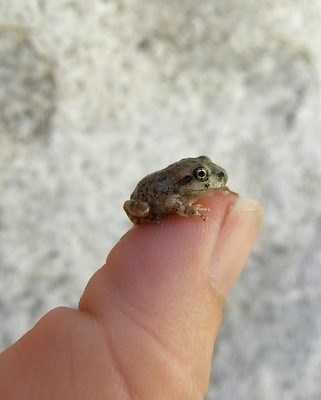
NPS / Kristen Lalumiere Frogs are probably the last thing that people expect to see when they visit the desert. However, some frogs and toads have adapted to life in arid lands. Amphibians are animals that have two life stages: a larval, aquatic form (or tadpole) and an adult, terrestrial form. Breeding male tree frogs and toads vocalize, chorusing in spring following winter rains or after the monsoon storms of summer. Gelatin-covered eggs are laid by the females at the bottom of a pool. They hatch in a few days. Then, for toad tadpoles in ephemeral water sources, it is a race to reach adulthood before the pool dries up. Two amphibian species are found in Joshua Tree National Park. The California tree frog, Pseudacris cadaverina, is a species of special management concern in Joshua Tree. It has a limited range in the park and is isolated from the rest of the California tree frog population. Tree frogs are found in the rocky, permanent water sources created by the Pinto Fault along the northern edge of the park. In Joshua Tree, the species is at the easternmost edge of its range. The red-spotted toad, Anaxyrus punctatus, is a true denizen of the desert, where it spends most of its life underground. Found from one end of the park to the other, toads appear after good, soaking rains. The red-spotted toad lays its eggs in potholes, springs, and the intermittent streams found in rocky canyons after heavy rains. |
Last updated: December 20, 2020
